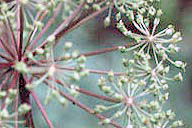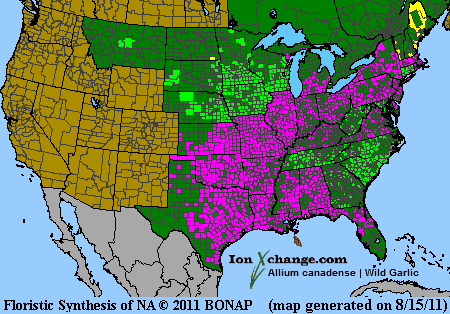 Loading... Please wait...
Loading... Please wait...- Home
- SEEDS
- SEED MIXES
- BUY PLANTS
- Info Request
-
Educational Videos
- Greenhouse Transplanting Demonstration
- Native Seed Cleaning demonstration at Ion Exchange Native Seed and Plant Nursery
- Attracting Butterflies
- Bidens - Bidens cernua Harvest Video
- Big Blue Stem Harvest
- Butterfly Milkweed Video
- Button Blazingstar - Liatris aspera Video
- Buttonbush - Cephalanthus occidentalis Video
- Canada Anemone - Anemone canadensis Harvest Video
- Cardinal Flower - Lobelia cardinalis Video
- Control Burn - Wildflower Field
- Cream Gentian - Gentiana flavida
- Culver's Root - Veronicastrum virginicum Video
- Cup Plant - Silphium perfoliatum Video
- Dormant Seeding | Planting
- Earthyman's Favorite Wildflowers Video
- Eco-Friendly Golf Course Seed Mix
- Floating Islands
- Fringed Loosestrife - Lysimachia ciliata Video
- Giant Yellow Hyssop - Agastache nepetoides Video
- Indiangrass - Sorghastrum nutans Video
- Iowa Prairie Partner Program
- Leadplant - Amorpha canescens (Potted) Video
- Meadow Blazingstar - Liatris ligulistylis
- Midland Shooting Stars - Dodecatheon meadii Video
- Native Plant Nursery Field Irrigation Experiment
- Nodding Onion - Allium cernuum Video
- Ohio spiderwort - Tradescantia ohiensis Video
- Old Man's Beard - Clematis virginiana blooms Video
- Oxeye Sunflower - Heliopsis helianthoides Video
- Prairie Spiderwort - Tradescantia bracteata
- Purple Coneflower - Echinacea purpurea Video
- Rain Garden or Water Garden Video
- Rattlesnake Master - Eryngium yuccifolium Video
- Riverbank Stabilization - Wetland Plants
- Rose Mallow - Hibiscus militaris Video
- Rosinweed - Silphium integrifolium Video
- Royal Catchfly - Silene regia
- Showy Tick Trefoil - Desmodium canadense Video
- Sneezeweed - Helenium autumnale Video
- Swamp Betony - Pedicularis lanceolata Video
- Swamp Milkweed - Asclepias incarnata Video
- Sweet Blackeyed Susan - Rudbeckia subtomentosa Video
- Tall Coreopsis - Coreopsis tripteris Video
- Urban Butterfly Garden
- Wild Bergamot - Monarda fistulosa Video
- Wild Geranium - Geranium maculatum Harvest
- Wild Goldenglow - Rudbeckia lanciniata Video
- Wild Petunia - Ruellia humilis Harvest Video
- Woodland Knotweed - Polygonum virginianum Video
- Yellow Coneflower - Ratibida pinnata Video
- Blog
- Resources
- Policies
Contact Us
Phone:
563-419-0837
or 563-535-7231
Email:
hbright@ionXchange.com
Browse Products
Add to Wish List
You Recently Viewed...
Our Newsletter
Product Description
Angelica (Angelica atropurpurea) - A relatively rare find today in swampy woodlands of the northern Tallgrass region. Tiny green-white flowers in large round heads from May to September. Can grow to 6 feet with a hollow smooth purple-colored stem. Angelica is calcareous and requires an alkaline soil with a pH of 7 to 8.
Umbilliferae Family - "Angelica, American Angelica, High Angelica, Common Angelica, Seacoast Angelica, Alexander's Angelica, Masterwort Aromatic, Scurvy Pea, Slim-flowered Scurvy Pea, Alexanders, Archangel, Aunt Jericho, Bellyache Root, Dead Nettle, Great Angelica, Masterwort, Purple-stem Angelica, Wild Celery"
| Sun Exposure | Savanna, Prairie |
| Soil Moisture | Mesic, Wet Mesic |
| Bloom Time | Spring May, June |
| Bloom Color | Green, White |
| Max. Height | 7 feet |
| Wetland Code | OBL |
| Germ Code | F |
| Seeds Per Packet | 300 |
| Seeds Per Ounce | 5,400 |
Angelica from an early legend telling of an angel revealing the medicinal properties of this plant to a monk during one of Euope's periodic Middle Age plagues.
Edible Uses:
Young shoots and leaf stalks - raw or cooked. When boiled in two lots of water they form a vegetable that strongly resembles celery. They can be peeled and eaten in salads or blanched and cooked like asparagus. The stems can also be candied and used as a sweetmeat. Root, leafstalks and stems - candied.
The stalks of this species were eaten like celery and it is said the flavor was very similar. Early settlers boiled portions of Angelica in sugar syrup to make a type of candy. They also used it as an ingredient in cakes. However, if you didn't know exactly what you were picking, you were headed for big trouble; it is very similar to the deadly water hemlock. In line with that, it is reported (most likely a confusion with water hemlock) that the roots were eaten by some Native Americans to commit suicide. If the roots of Angelica are poisonous, they must lose their toxicity when dried because the dried roots of this species were used as an emergency food source and had limited medicinal uses. The dried roots were pulverized and used to treat cold symptoms, rheumatism, fevers, urinary troubles and other related disorders.
In Appalchia, the root is still harvested in the fall for winter use. The volatile oils of Angelica are still used there to treat colic and gas. One of the oldest known poultices in North America was made by mashing the roots of A. archangelica with the pounded leaves of Artemesia canadensis. The whole mass was heated and applied to the body on the opposite side of where the pain was emanating. The same poultice was also quite effective at reducing swelling. Poultices of Angelica root by itself were used to treat arthritis, chest discomfort and pneumonia.
Medicinal Uses:
A tea made from the leaves is carminative and stomachic. It is also used in the treatment of colds, rheumatism etc. The seed and roots can also be used and have a stronger effect. The plant has similar properties to angelica, A. archangelica, though it is inferior since it is less aromatic. The root is carminative, diaphoretic, emmenagogue, sedative, stomachic and tonic. An infusion has been used in the treatment of fevers, colds, flatulent colic and other stomach disorders, obstructed menses and as a general tonic for women. Externally it has been used as a gargle for sore throats and mouths and as a poultice for broken bones, swellings etc. It has also been used, both internally and externally, as a treatment for rheumatism.
The Native Americans of Arkansas smoked the leaves with tobacco. The Meskwaki of this area boiled the whole plant to make a tea for treating hay fever. Some Native Americans made a strong tea from the root to induce vomiting or discharge mucus from the respiratory tract. The root was also given for treatment of tuberculosis and consumption. The tea functioned well for kidney problems (unspecified), digestive difficulties, colic, hysteria, to kill and expel worms and for back problems. The tea also worked quite well as a mouthwash.
Root teas were relied upon for treating lingering illnesses, especially in children. Adecoction from the simmered root was enjoyed as a tonic three times a day by Rocky Mountain Indians; the tonic was also given for building up strength after an illness by both Native Americans and early settlers.
An early physician once maintained that eating 15 to 60 grains of the dried root once a day would cure alcoholism. Still others claimed that a small amount of the dried root dissolved in wine would curb sexual appetites.
Small pieces scraped from the root were used to releve coughing and sore throat and bronchitis. The root scrapings were also smoked to clear the head of stuffiness during colds.
Other Uses: Unknown
Herbal Uses: Unknown







